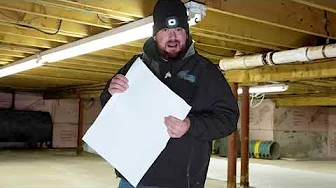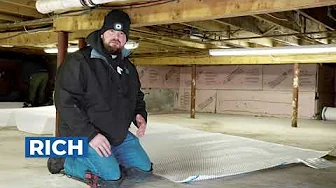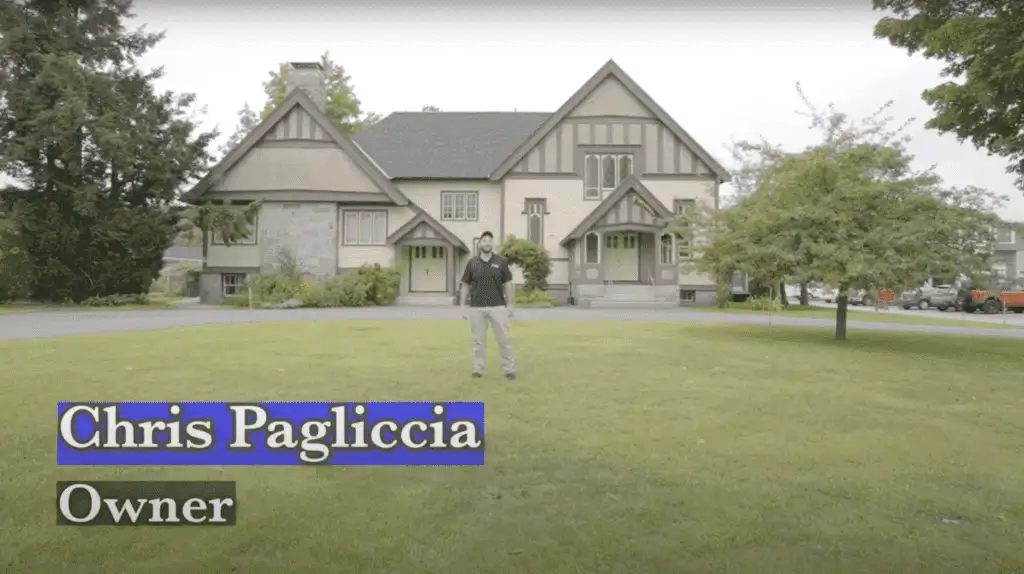Foundation Crack Repair Berwick ME
Cracks in your foundation aren’t just cosmetic—they can indicate serious structural problems that need immediate attention. In Berwick, ME, the shifting seasons and variable New England weather can take a toll on homes, making foundation issues more common than you might think. Left unaddressed, foundation cracks can lead to water damage, higher repair costs, and even jeopardize a building’s structural integrity.
Real People - Real Great Results
Crawl Space Video Playlist
Understanding the Causes of Foundation Cracks
Foundation cracks usually don’t appear out of nowhere—they’re the result of forces at work beneath your home. In Berwick, ME, the unique blend of environmental factors and soil conditions creates a perfect storm for potential damage. Here’s where things often go sideways:
- Soil Movement: Soil shifts. It heaves with moisture after heavy rains, then contracts when droughts hit. This push-and-pull can stress even the most solidly built foundations. Think of it as your house riding waves of pressure—except houses aren’t meant to be surfers, and the cracks show just how much they dislike the ride.
- Freeze-Thaw Cycles: Ah, New England winters. The snow melts, the soil soaks it up, and temperatures drop back below freezing. Water in the soil expands as it freezes, pressing against your foundation. It’s like Mother Nature testing the limits of your structural patience, one freeze-thaw loop at a time.
- Poor Drainage: Gutters overflowing? Soggy yard? That water isn’t just an annoyance—it’s a subtle attack. Without proper drainage, water gathers around your foundation, softening the surrounding soil. Cue the cracking as your house sinks ever so slightly into its moistened surroundings.
- Tree Roots: Trees are deceptively charming villains. Their roots grow steadily and stubbornly, inching toward your foundation like they have a vendetta. Over time, they push against the concrete like tiny but relentless battering rams. The older the tree, the more determined those roots become.
Understanding what’s causing your foundation cracks is like playing detective—except the stakes are your home’s stability.
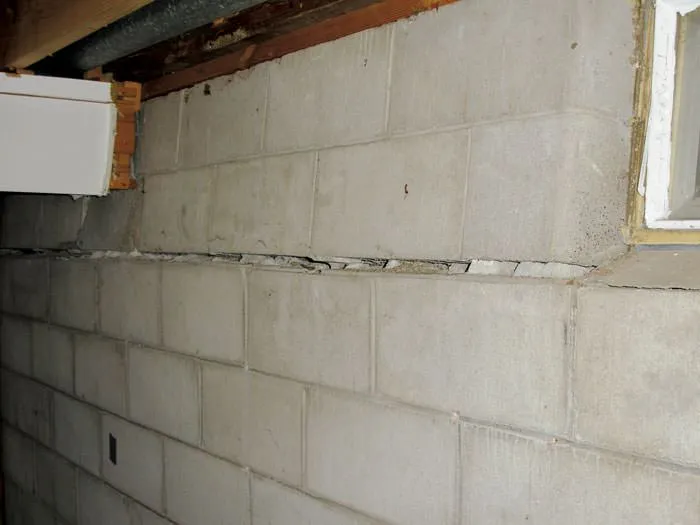
Types of Foundation Cracks to Watch For
Not all cracks in a foundation are created equal. Some are minor annoyances, while others can signal major trouble. Here’s a quick rundown of the most common types you might spot—and what they could mean.
- Hairline Cracks: These tiny, spider-web-thin cracks are usually nothing to panic over, especially in newer homes. They’re often caused by the natural curing process of concrete or minor settling over time. Still, keep an eye on them—what starts as a harmless sliver can occasionally grow into something more serious.
- Vertical Cracks: Running straight up and down, these cracks are often the result of your foundation settling unevenly. They’re usually not catastrophic but can widen over time. If water starts seeping through a vertical crack, it’s time to take action before a small drip turns into a costly problem.
- Horizontal Cracks: These are the ones to watch out for. A horizontal crack along a foundation wall typically signals significant pressure against your home—often from expanding soil or freezing conditions. Left unchecked, this kind of pressure can cause walls to bow or buckle, threatening your home’s structural integrity.
- Stair-Step Cracks: Found most commonly in brick or concrete block foundations, these cracks follow the mortar lines, creating a stair-step pattern. They’re a red flag for foundation movement, often caused by soil shifting or settling unevenly beneath your home. Over time, these can worsen and require more extensive repairs.
Spotting these cracks early and understanding what they mean can save you a lot of stress (and money). While some types are more ominous than others, any crack deserves attention before it has the chance to escalate.
Why Prompt Repairs Are Necessary
Let’s cut to the chase—ignoring foundation cracks doesn’t make them go away; it makes them worse. What starts as a bit of surface damage can morph into structural instability that costs a small fortune to fix. Cracks aren’t just an eyesore; they’re an open invitation for water to sneak in, leading to moisture issues, mold, and even flooding. And if you’re planning to sell your home anytime soon, think again—a cracked foundation is a red flag that scares off potential buyers faster than you can say “price reduction.”
In Berwick, ME, where freeze-thaw cycles and shifting soils put relentless stress on foundations, acting quickly is not optional—it’s essential. Left unchecked, tiny fractures can expand into serious problems, like uneven floors, sticking doors, or walls that bow inward under soil pressure. Repairs, when delayed, often escalate from a manageable weekend job to a structural overhaul that requires a professional crew and a hefty budget.
The truth is simple: small problems are cheaper to fix than big ones. Prompt repairs save you money in the long run, protect your home’s value, and, most importantly, ensure your family’s safety. No frills, no excuses—just take action while you still can.
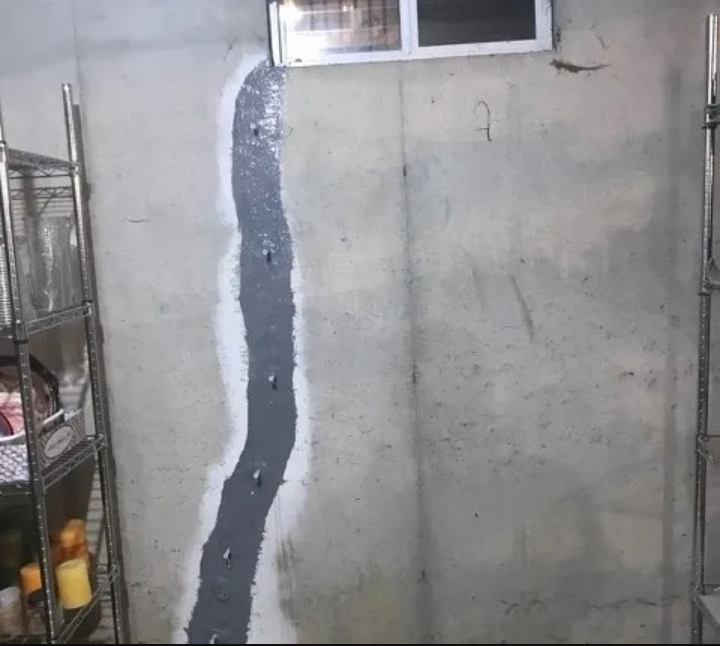
Foundation Crack Repair Methods in Berwick ME
When it comes to repairing foundation cracks, one size does not fit all. The solution depends heavily on the type of crack, its severity, and the underlying cause. Fortunately, several proven methods are available to address issues faced by homeowners in Berwick, ME.
- Epoxy and Polyurethane Injections: For small to medium-sized cracks, epoxy and polyurethane injections are often the first line of defense. Epoxy works by binding the crack, restoring structural integrity, while polyurethane foam expands to seal off potential water leaks. This method is quick, cost-effective, and ideal for addressing minor to moderate damage before it gets worse.
- Reinforcing With Carbon Fiber Straps: Horizontal cracks need more than just a surface fix. Carbon fiber straps are applied to stabilize bowed or strained foundation walls. This method strengthens the structure without requiring major demolition, making it a practical and less invasive option for many homeowners.
- Waterproofing Solutions: Cracks that let water seep into your basement demand a two-pronged approach: repair the crack and prevent further water intrusion. Installing drainage systems, sump pumps, or exterior waterproof coatings addresses the moisture issue and reduces the likelihood of additional damage.
- Foundation Underpinning: When cracks are caused by significant settling, underpinning is often required. This involves inserting steel piers or concrete supports beneath your foundation to lift and stabilize it. While this is a more intensive and costly process, it’s sometimes the only way to address major stability concerns.
- Crack Monitoring: Sometimes inaction is the best action—temporarily, at least. Hairline cracks don’t always require immediate repair, but they should be monitored closely. Professionals use tools like crack gauges to track their progression, ensuring any changes are caught early.
Berwick’s unique combination of harsh winters, freeze-thaw cycles, and unpredictable soil conditions makes timely foundation repair critical. By addressing cracks the right way, you not only protect your home but also prevent escalating costs down the line.
Indicators You Should Call a Professional
Not all foundation cracks are created equal. Some might be minor, needing little more than basic monitoring, while others scream for immediate professional intervention. If you spot any of the following red flags, it’s time to stop Googling DIY fixes and bring in an expert:
- Cracks Wider Than 1/4 Inch: This isn’t just a small blemish—it’s a sign the structure is shifting more than it should. Anything this size or larger goes beyond a cosmetic issue.
- Bowing or Bulging Walls: If your foundation walls look like they’re under pressure and curving inwards, it could mean soil pressure or structural failure. This isn’t something you caulk over.
- Presence of Moisture: Seeing water stains, mold, or even just dampness near the cracks? That’s a double issue—your foundation is compromised, and water infiltration is making it worse.
- Doors and Windows Misaligned: Struggling with sticky doors or windows that no longer fit their frames? That’s often a subtle—but serious—indicator of foundation movement that needs attention.
- Visible Sinking or Settlement: If part of your foundation looks lower than the rest or the house feels uneven, you’re facing a potential settlement issue that won’t resolve itself.
Foundation problems don’t fix themselves. In fact, they tend to escalate. If any of these signs resonate with what you’ve noticed around your home in Berwick, don’t wait for the problem to grow. A professional assessment now could save you thousands in deeper repairs later.

Choosing the Right Foundation Repair Specialist in Berwick ME
When it comes to foundation repair, not all contractors are created equal. Picking the right specialist can mean the difference between a lasting fix and ongoing headaches. Here’s what to keep in mind:
- Experience and Expertise: Foundation repair in Berwick requires knowledge of local soil conditions, weather patterns, and construction styles. Look for contractors with a proven history in the area and specific expertise in foundation work—this is not the time to hire a general handyman. Ask how many similar projects they’ve completed and whether they’ve encountered issues like yours before.
- Licenses and Insurance: A reputable contractor should have the proper licenses to work in Maine. They should also carry liability insurance and workers’ compensation coverage to protect you from financial liability in case of accidents or property damage during the repair process. If they can’t provide proof, walk away.
- Transparent Pricing: Vague quotes and sudden “surprise” costs can quickly derail a project. Choose a contractor willing to offer a clear, itemized estimate upfront. They should explain the scope of work in plain terms without the hard sell. Ask about payment schedules so you know exactly what to expect.
- Reviews and References: Happy customers are the best indicator of quality work. Check online reviews on local platforms and ask for references. Call past clients to gauge how well the contractor communicates, adheres to deadlines, and delivers results. A history of satisfied homeowners in Berwick is a great sign.
Don’t settle for the first name that pops up online or a flashy website. A trustworthy foundation specialist will take the time to evaluate your home thoroughly, pinpoint the root cause of the problem, and lay out a plan that fits your specific needs. It’s your home—act like it.
Steps Homeowners Can Take to Prevent Foundation Cracks
Preventing foundation cracks is simpler—and cheaper—than fixing them. A little proactive effort goes a long way in keeping your home solid and secure:
- Maintain Proper Drainage: Water is a foundation’s worst enemy. Check your gutters and downspouts regularly to ensure water flows away from your home. Downspouts should extend at least 6 feet away. Adding splash blocks or extending drains can help divert water even further.
- Monitor Soil Moisture: Fluctuating soil can wreak havoc on your home’s foundation. In prolonged dry spells, consider watering the soil around the foundation just enough to prevent excessive shrinkage. Conversely, ensure the ground doesn’t stay waterlogged after heavy rain.
- Inspect Regularly: Taking a closer look at your foundation a couple of times a year can save you big headaches later. Look for any new cracks, discoloration, or signs of moisture intrusion. Catching minor issues early means avoiding major repairs down the line.
- Trim Nearby Trees: Tree roots are silent troublemakers, slowly creeping toward your foundation over the years. Keep trees at a safe distance, and if they’re already too close, consult an arborist about root barriers or removal.
Preventative maintenance isn’t glamorous, but it’s the difference between years of structural peace of mind and costly surprises. With these small habits, you’ll keep your home standing on solid ground.
Conclusion
Foundation cracks are more than just blemishes—they’re signals of potential structural vulnerabilities that demand your attention. In a place like Berwick, ME, where the environment loves to test the limits of construction with its freeze-thaw cycles and temperamental soil, ignoring these warnings is a gamble no homeowner should take. The solution isn’t glamorous, but it is straightforward: act fast. Whether it’s sealing a hairline crack, installing drainage solutions, or underpinning an unstable foundation, taking decisive action now beats scrambling during a future crisis.
Your home is an investment, but more importantly, it’s your sanctuary. Addressing foundation issues promptly not only safeguards your property value but also protects the very ground you live on—literally. Let your foundation crack be the nudge that reminds you: a strong home starts from the bottom up.
Reviews from Happy Customers
Our top priority is customer satisfaction, and we work closely with clients to understand their unique needs and goals.




